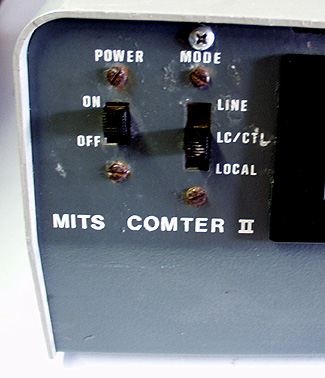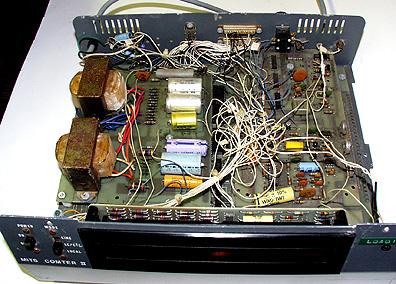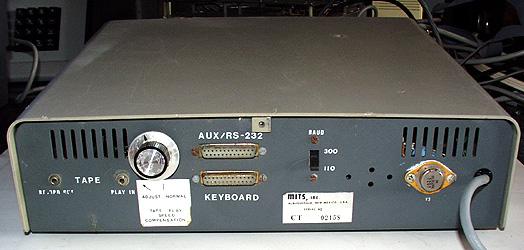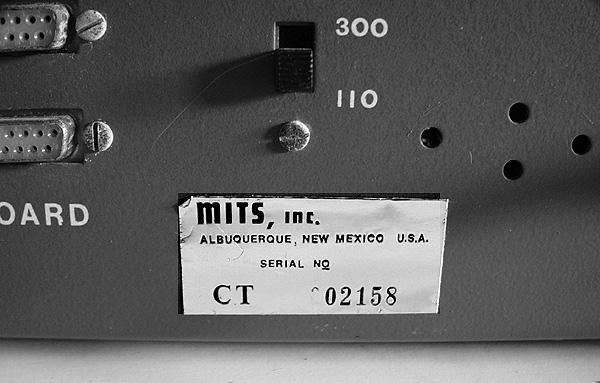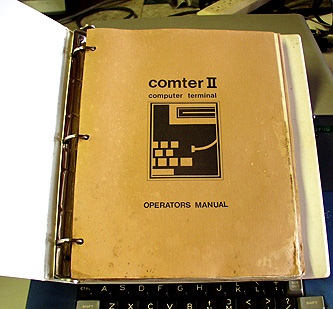The Comter II was a terminal (keyboard and "monitor") made for the Altair 8800 computer. Calling it a monitor is a bit deceptive by today's standards...you can see from the pictures that it was only capable of displaying a single line of text at a time (32 characters). However, at the back of the Comter II you can find a built in I/O (input/output) connection for a audio cassette tape player. That was one of the common ways to store your data back in 1975. That means you could save programs on an audio cassette and later play them back into your computer.
And it wasn't cheap!! In the April 1975 PRICE LIST the Comter II is listed as costing $920...that's about $300 MORE than the Altair 8800 computer which was listed as $621. If you had the skills and the courage, you could buy the Comter II as a kit and solder it together on your own. The kit only costs $780.
So why would someone pay so much for a keyboard and monitor? Because without one, the only way to program your Altair 8800 computer was to use the front panel switches on the computer to enter a program. Even simple programs might take hours to enter...being able to type in a program on a keyboard was light-years faster!
This Comter II came with documentation.
|
Copyright © 2024 by Early Computers Project, All Rights Reserved. |



